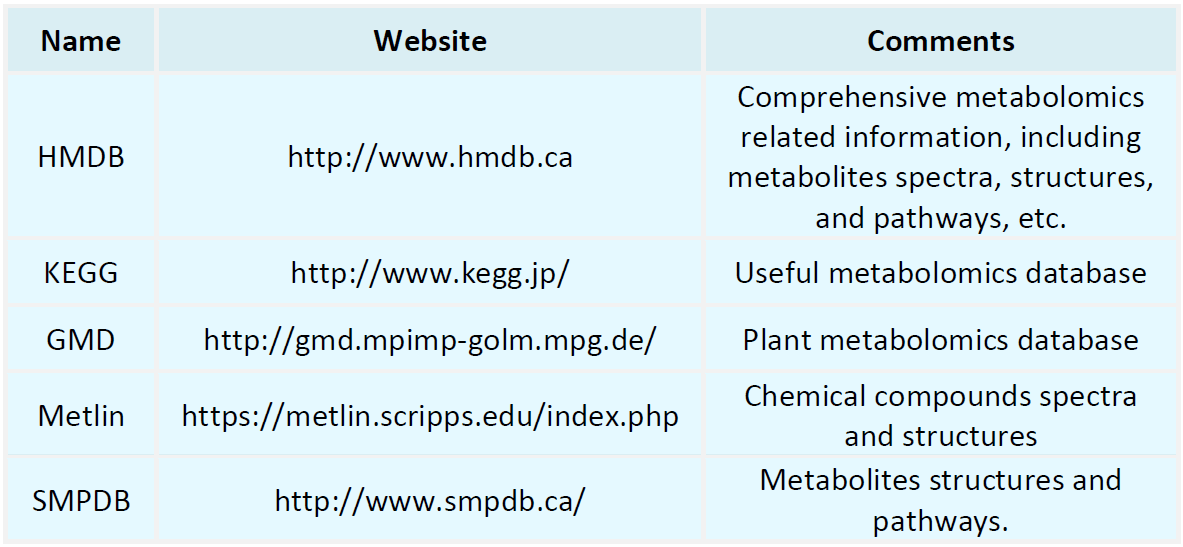Resources
Proteomics Databases

Metabolomics Databases

-
• Edman Degradation for Protein Sequencing
Edman degradation for protein sequencing is a fundamental technique in life science research, essential for elucidating protein structures and functions. This method, introduced decades ago, has become a cornerstone in protein chemistry. It sequentially cleaves and labels the N-terminal amino acids of a polypeptide chain, enabling precise determination of a protein’s primary structure. Its unparalleled accuracy and reliability have established it as a widely used approach in protein science, drug disc......
-
• Enzyme Isolation, Purification, and Characterization
Enzyme isolation, purification, and characterization are integral to modern biochemistry and biotechnology. Enzymes, as biological catalysts, are central to a wide range of biological processes and applications. These steps facilitate the production of highly pure and active enzymes, enabling their effective use in research, industrial production, and medical diagnostics. Enzyme isolation involves extracting enzymes from biological materials, while purification removes impurities to achieve the nece......
-
• Characterization of Protein and Nucleic Acid
The characterization of protein and nucleic acid is a critical technique for elucidating the complex structures and functions of biomolecules. This process encompasses the detailed examination of their structures, sequences, interactions, and dynamic behaviors, providing insights into their roles and mechanisms within biological systems. Proteins serve as the functional machinery of life, driving essential cellular activities such as catalysis, growth, and signaling. Nucleic acids, in contrast, act as......
-
• Cryo-EM of Membrane Proteins
Cryo-EM of membrane proteins is an advanced technique leveraging cryogenic electron microscopy to resolve the high-resolution three-dimensional structures of membrane proteins. Membrane proteins, embedded in or associated with biological membranes, play pivotal roles in processes such as signal transduction, material transport, and energy conversion. However, their complex structures and low stability pose significant challenges for traditional methods like X-ray crystallography and nuclear magnetic r......
-
• Single-Molecule Protein Sequencing
Single-Molecule Protein Sequencing is designed to precisely determine the amino acid sequence of individual protein molecules. Unlike traditional protein sequencing methods, which require analyzing large quantities of identical protein molecules, this technique directly reads sequence information at the single-molecule level. Its key advantage lies in exceptional sensitivity and specificity, allowing detection of trace amounts of proteins, including those present in very low abundance. This capability......
-
Protein Microarray Analysis is a high-throughput and efficient biotechnological approach for investigating molecular interactions, including protein-protein, protein-drug, and protein-nucleic acid interactions. This method relies on immobilizing a diverse array of protein molecules onto a solid substrate in an orderly manner. By introducing probe molecules-such as fluorescently labeled antibodies or drugs-specific binding events can be detected, allowing researchers to measure protein expression level......
-
• Accurate Quantitative Acetylproteomics Service by MtoZ Biolabs
The quantitative acetylproteomics service provides precise, high-resolution analysis of protein acetylation modifications. Utilizing advanced mass spectrometry technologies, including high-resolution instruments such as the Q Exactive HF and Orbitrap, quantitative acetylproteomics service enables detailed characterization of acetylation patterns and their role in regulating protein function and dynamic biological processes.
-
• MtoZ Biolabs Offers Advanced Chemical Proteomics Analysis Service
Chemical proteomics analysis service integrates synthetic chemistry, cell biology, and mass spectrometry techniques to probe the interactions between small molecules and proteins, aiding in the identification of drug targets and elucidating their mechanisms of action. Widely applied in drug discovery and development, this methodology facilitates the identification of drug targets, optimization of lead compounds, and comprehensive profiling of off-target effects.
-
• Advancing Research with MtoZ Biolabs' Quantitative Glycoproteomics Service
Quantitative glycoproteomics service is a powerful tool for precisely identifying and analyzing glycosylation modifications in glycoproteins. As a critical area within post-translational modification (PTM) research, quantitative glycoproteomics service is essential for understanding disease mechanisms, discovering biomarkers, developing novel drugs, and advancing personalized medicine.
-
Quantitative phosphoproteomics service utilizes advanced phosphopeptide enrichment methods combined with high-sensitivity mass spectrometry to accurately quantify and identify phosphoproteins with low abundance and across a wide dynamic range. Since the late 1990s, advancements in mass spectrometry have transformed phosphoprotein research, shifting from qualitative to quantitative analysis.
How to order?







